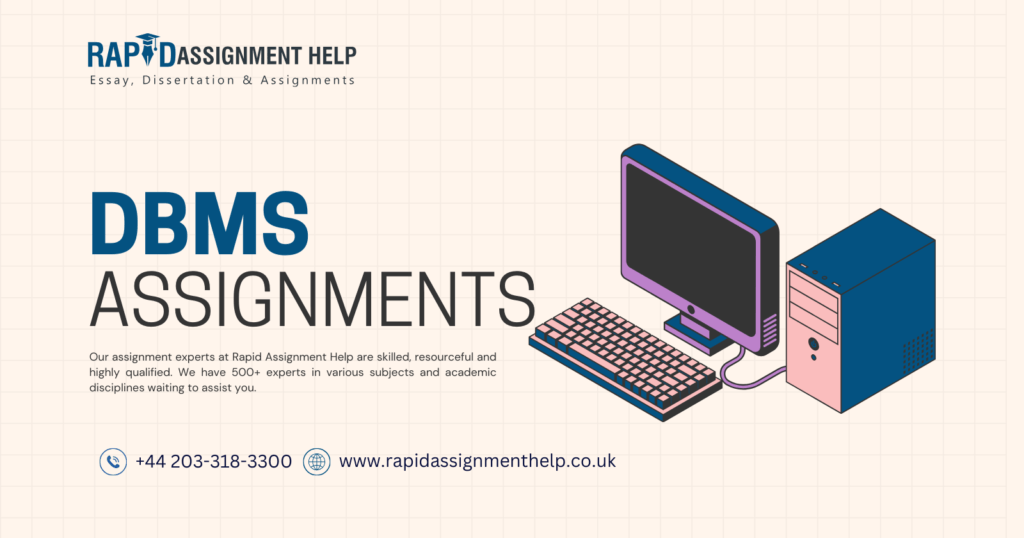Introduction
In the digital era, data plays a crucial role in every industry. Whether it’s businesses managing customer records or social media platforms handling user interactions, databases serve as the backbone of modern applications. A Database Management System (DBMS) is a software system that enables users to efficiently store, retrieve, and manage data. This guide aims to provide beginners with a clear understanding of DBMS, its types, components, and real-world applications.
Learning DBMS as a Beginner
If you are new to DBMS, there are various learning resources available. Many students seek DBMS Assignment Help to gain a deeper understanding of database concepts and practical implementation. Hands-on practice with SQL queries, database design, and schema management can significantly enhance learning outcomes.
Moreover, understanding databases can also provide insights into broader psychological concepts. For instance, Cognitive Dissonance in the Digital Age: How Social Media Shapes Our Decisions highlights how digital platforms use structured data to influence user behaviors and decision-making processes.
What is a DBMS?
A Database Management System (DBMS) is a software tool designed to store, organize, and manage data efficiently. It acts as an interface between users and databases, ensuring data integrity, security, and consistency. Without DBMS, handling large volumes of data manually would be an overwhelming and error-prone task.
Key Functions of a DBMS
- Data Storage and Retrieval – A DBMS allows users to store data in structured formats and retrieve it through queries.
- Data Security – Access control mechanisms ensure that only authorized users can access or modify data.
- Data Integrity – Constraints and validation rules maintain data accuracy and consistency.
- Concurrency Control – Multiple users can access and modify data simultaneously without conflicts.
- Backup and Recovery – DBMS provides automated data backup and recovery options to prevent data loss.
Types of DBMS
DBMS can be categorized into different types based on data organization and structure:
-
Hierarchical DBMS
In a hierarchical DBMS, data is organized in a tree-like structure, where each record has a single parent and can have multiple child records. This structure is useful for applications with well-defined, fixed relationships, such as organizational charts or file systems. -
Network DBMS
A network DBMS is an extension of the hierarchical model, allowing multiple parent-child relationships. This provides greater flexibility in representing complex relationships between data entities, making it ideal for applications such as supply chain management and telecommunications. -
Relational DBMS (RDBMS)
One of the most widely used database models, an RDBMS organizes data into tables consisting of rows and columns. Each row represents a record, and each column represents an attribute of the record. Relational databases use Structured Query Language (SQL) for managing data. Examples of RDBMS include MySQL, PostgreSQL, and Oracle Database. -
Object-Oriented DBMS (OODBMS)
An Object-Oriented DBMS (OODBMS) integrates database capabilities with object-oriented programming concepts. Data is represented as objects, similar to how it is structured in programming languages like Java and C++. This model is particularly useful for applications requiring complex data structures, such as multimedia databases and CAD (Computer-Aided Design) systems.
Components of a DBMS
A DBMS consists of several components that work together to manage data efficiently:
- Database Engine – The core component responsible for data storage, retrieval, and manipulation.
- Database Schema – Defines the structure and organization of data.
- Query Processor – Interprets and executes database queries written in languages like SQL.
- Transaction Management – Ensures that database transactions maintain data integrity.
- Data Dictionary – Stores metadata, including details about database structure and relationships.
Advantages of Using a DBMS
Implementing a DBMS offers several benefits:
- Improved Data Organization – Efficiently structures data for quick access.
- Data Consistency – Eliminates redundancy and ensures uniformity.
- Scalability – Supports large datasets and growing user demands.
- Enhanced Security – Provides authentication and authorization controls.
- Multi-User Access – Enables concurrent data access without conflicts.
Real-World Applications of DBMS
DBMS is used across various industries, including:
- Banking – Managing customer accounts, transactions, and financial records.
- Healthcare – Storing patient records, appointments, and medical histories.
- E-commerce – Handling product catalogs, customer orders, and payment details.
- Education – Managing student records, course enrollments, and faculty databases.
Conclusion
Database Management Systems are essential tools for efficiently handling data in various industries. By understanding the basics of DBMS, its components, and applications, beginners can build a strong foundation in database management. As data continues to play a vital role in technological advancements, mastering DBMS concepts can open doors to numerous career opportunities.












































